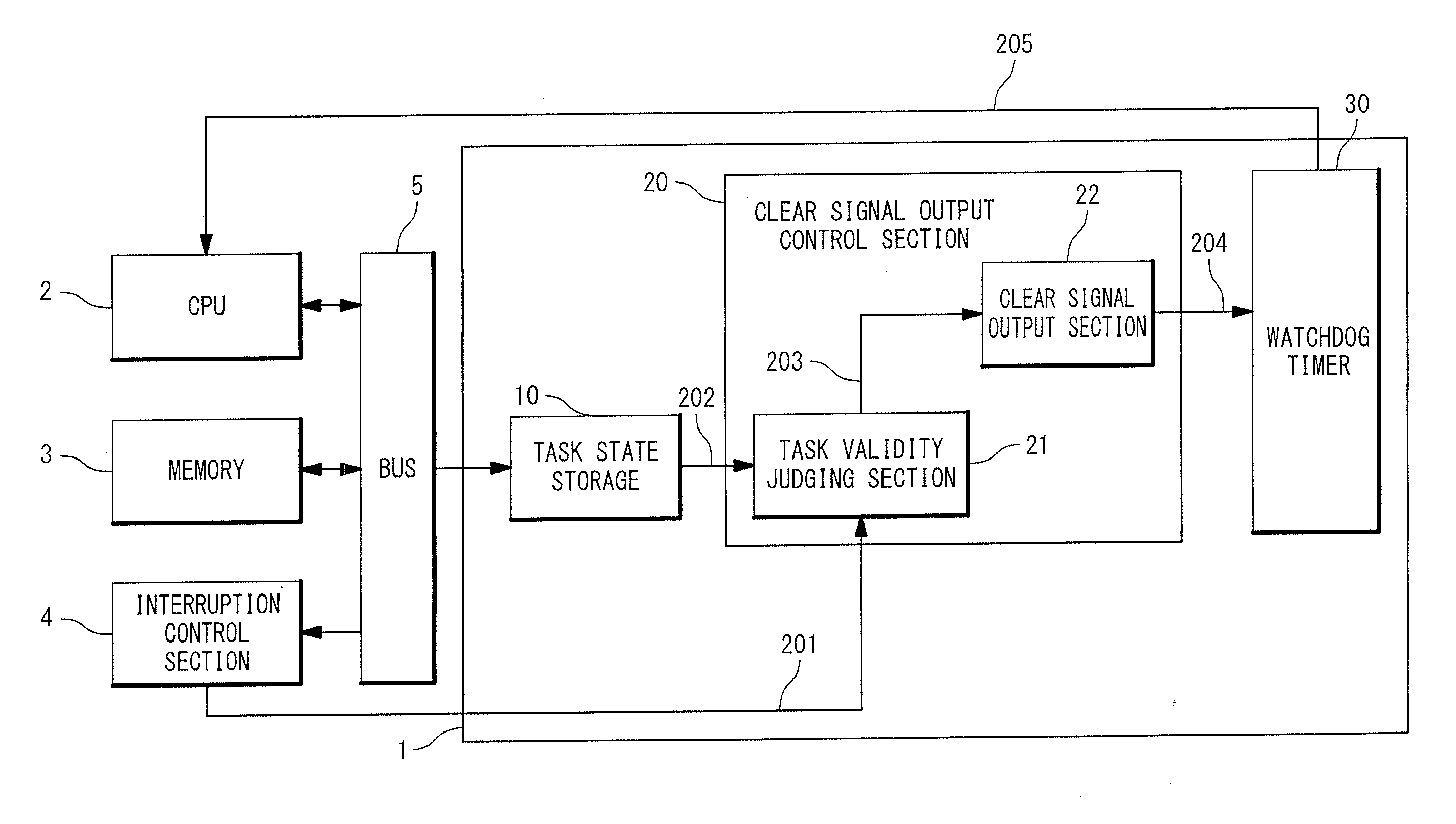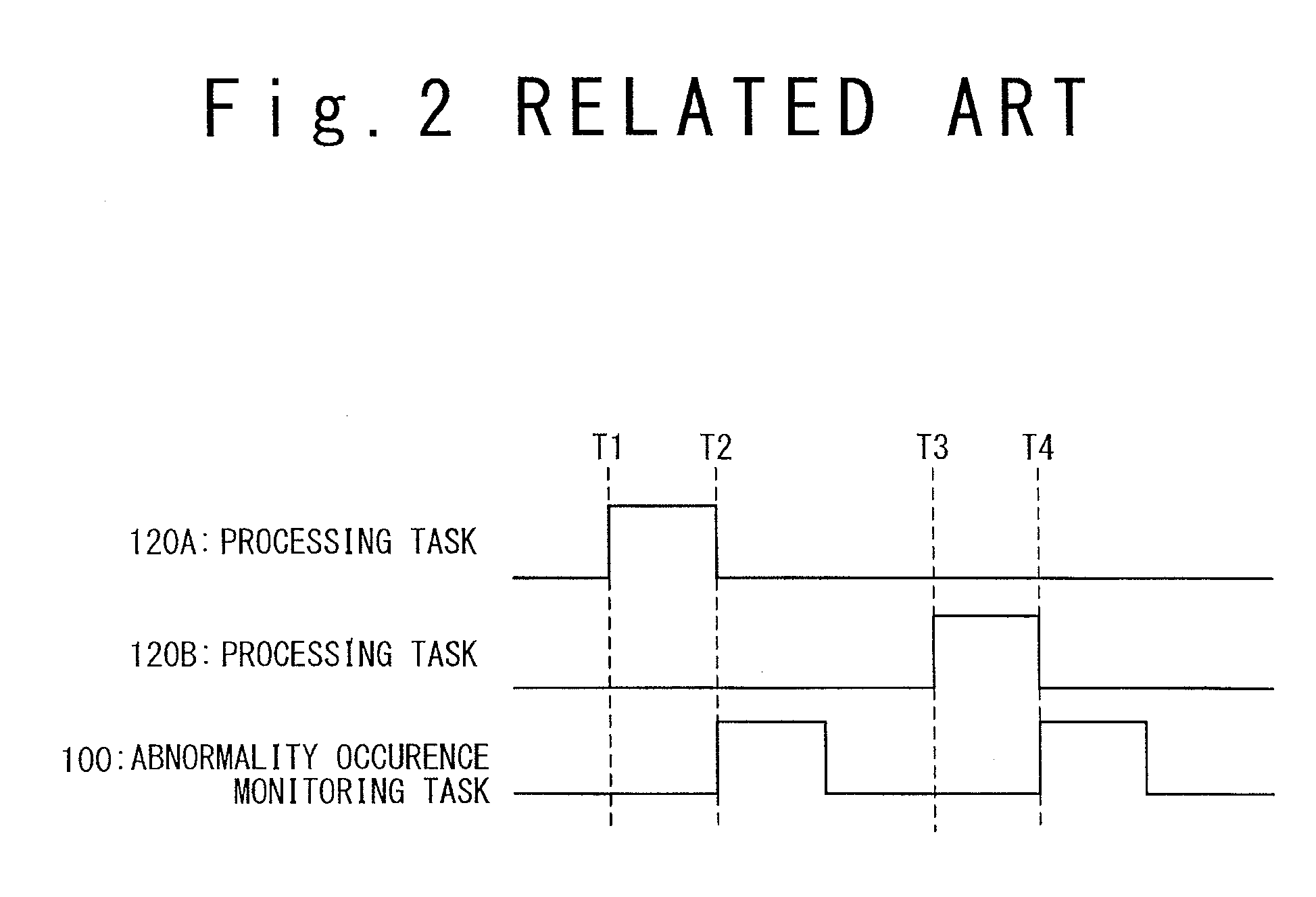Semiconductor device and abnormality detecting method
a technology of electromagnetic field and magnetic field, applied in the field of electromagnetic field, can solve the problem of not being able to execute secure abnormality detections with digital processing devices, and achieve the effect of secure detection of processing tasks
- Summary
- Abstract
- Description
- Claims
- Application Information
AI Technical Summary
Benefits of technology
Problems solved by technology
Method used
Image
Examples
first embodiment
[0030]A semiconductor device and an abnormality detecting method will be described according to a first embodiment of the present invention. FIG. 4 is a block diagram showing an example of a configuration of an abnormality detecting section 1 that is a semiconductor integrated device according to the first embodiment of the present invention. Referring to FIG. 4, the abnormality detecting section 1 is connected to a bus 5, and a CPU (Central Processing Unit) 2, a memory 3, and an interruption control section 4 are connected to the bus 5. An input section for acquiring inputs of a user and an output section for having the user recognize a processing result may further be connected to the bus 5.
[0031]The CPU 2 executes software related to the present invention stored in the memory 3 to perform computing processing and control processing. The memory 3 is formed with a hard disk, a RAM (Random Access Memory), a ROM (Read Only Memory), or the like, which stores programs that implement ea...
second embodiment
[0110]A semiconductor device and an abnormality detecting method will be described according to a second embodiment of the present invention. FIG. 11 is a block diagram showing an example of the structure of an abnormality detecting section 1 that is a semiconductor integrated device according to the second embodiment of the present invention. In the second embodiment of the present invention, the abnormality detecting section 1 includes an output permission control section 40 in addition to the configuration of the first embodiment. The abnormality detecting section 1 according to the second embodiment of the present invention is different from that of the first embodiment in respect that the clear signal output section 22 is capable of executing operations based on a clear permission signal 206 outputted from the output permission control section 40 by ignoring the valid signal 203 outputted from the task validity judging section 21. Other configurational components are the same a...
third embodiment
[0118]A semiconductor device and an abnormality detecting method will be described according to a third embodiment of the present invention. FIG. 12 is a block diagram showing an example of a configuration of the abnormality detecting section 1 that is a semiconductor integrated device according to the third embodiment of the present invention. In the third embodiment of the present invention, the abnormality detecting section 1 further includes a DMA (Direct Memory Access) control section 50 which is connected to the CPU 2 and the memory 3 via the bus 5. Other configurational components are the same as those of the second embodiment, so that explanations thereof are omitted by simply applying same reference numerals to the same configurational components.
[0119]The DMA control section 50 generates an address of the execution state of the processing task existing in the memory 3 based on a startup request provided from the CPU 2 or based on the interruption signal 201. Further, the D...
PUM
 Login to View More
Login to View More Abstract
Description
Claims
Application Information
 Login to View More
Login to View More - R&D
- Intellectual Property
- Life Sciences
- Materials
- Tech Scout
- Unparalleled Data Quality
- Higher Quality Content
- 60% Fewer Hallucinations
Browse by: Latest US Patents, China's latest patents, Technical Efficacy Thesaurus, Application Domain, Technology Topic, Popular Technical Reports.
© 2025 PatSnap. All rights reserved.Legal|Privacy policy|Modern Slavery Act Transparency Statement|Sitemap|About US| Contact US: help@patsnap.com



